Seon-Min Rhee
Towards Accurate Facial Landmark Detection via Cascaded Transformers
Aug 23, 2022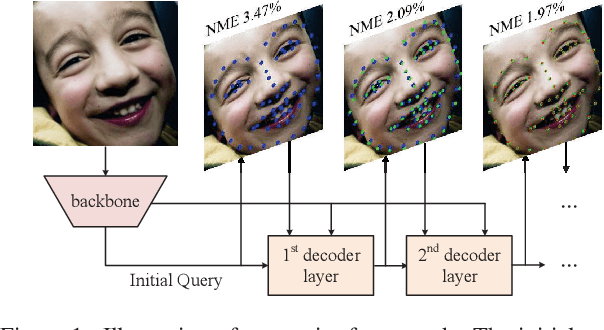
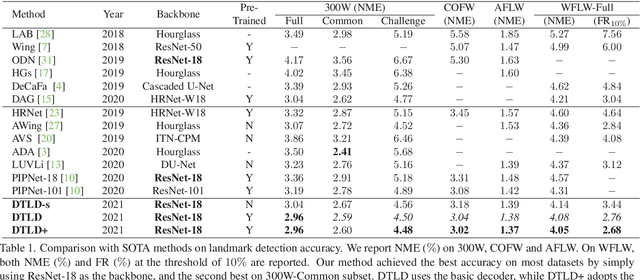
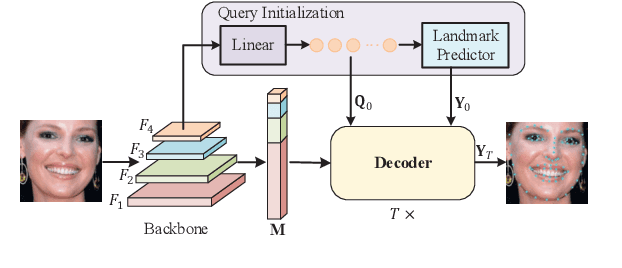

Abstract:Accurate facial landmarks are essential prerequisites for many tasks related to human faces. In this paper, an accurate facial landmark detector is proposed based on cascaded transformers. We formulate facial landmark detection as a coordinate regression task such that the model can be trained end-to-end. With self-attention in transformers, our model can inherently exploit the structured relationships between landmarks, which would benefit landmark detection under challenging conditions such as large pose and occlusion. During cascaded refinement, our model is able to extract the most relevant image features around the target landmark for coordinate prediction, based on deformable attention mechanism, thus bringing more accurate alignment. In addition, we propose a novel decoder that refines image features and landmark positions simultaneously. With few parameter increasing, the detection performance improves further. Our model achieves new state-of-the-art performance on several standard facial landmark detection benchmarks, and shows good generalization ability in cross-dataset evaluation.
Pushing the Performance Limit of Scene Text Recognizer without Human Annotation
Apr 16, 2022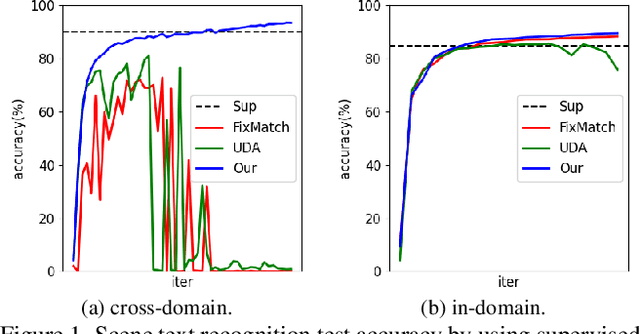
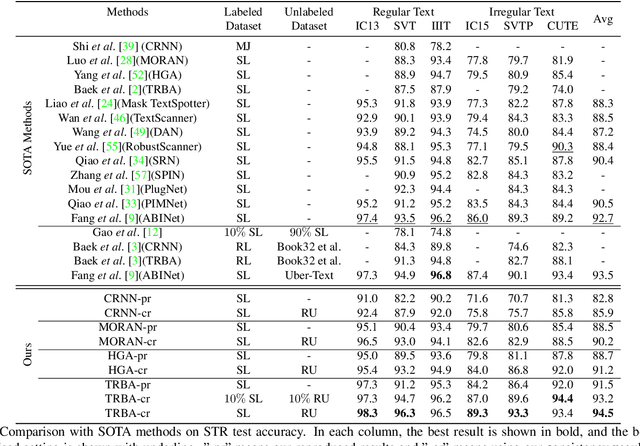
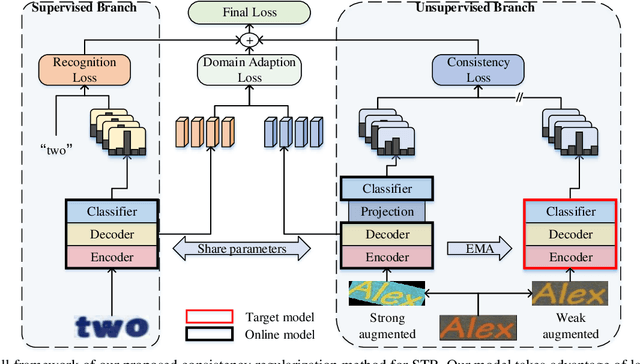
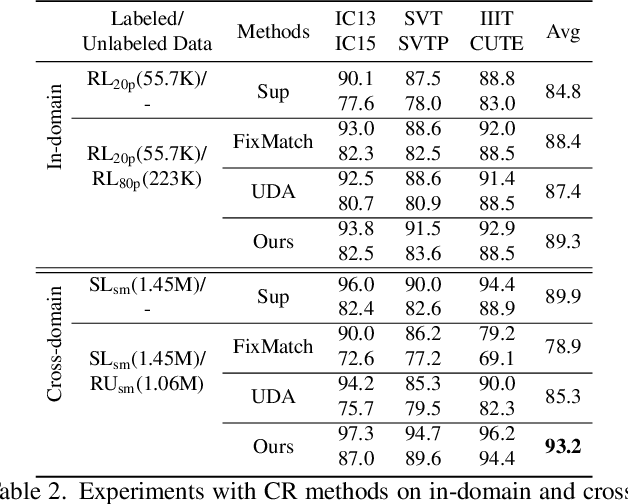
Abstract:Scene text recognition (STR) attracts much attention over the years because of its wide application. Most methods train STR model in a fully supervised manner which requires large amounts of labeled data. Although synthetic data contributes a lot to STR, it suffers from the real-tosynthetic domain gap that restricts model performance. In this work, we aim to boost STR models by leveraging both synthetic data and the numerous real unlabeled images, exempting human annotation cost thoroughly. A robust consistency regularization based semi-supervised framework is proposed for STR, which can effectively solve the instability issue due to domain inconsistency between synthetic and real images. A character-level consistency regularization is designed to mitigate the misalignment between characters in sequence recognition. Extensive experiments on standard text recognition benchmarks demonstrate the effectiveness of the proposed method. It can steadily improve existing STR models, and boost an STR model to achieve new state-of-the-art results. To our best knowledge, this is the first consistency regularization based framework that applies successfully to STR.
 Add to Chrome
Add to Chrome Add to Firefox
Add to Firefox Add to Edge
Add to Edge